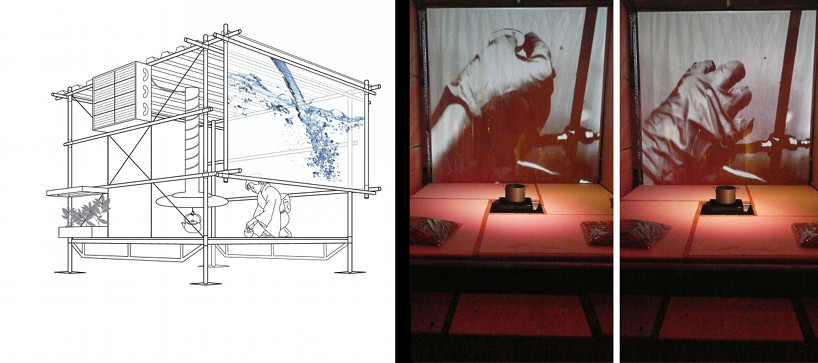
The 'T' House by Andrea Polli from usa
designer's own words:
Through the The 'T' House, we imagine a future in which architectural systems are microbial and function in ways similar to mechanisms within a living tea plant.
Codified during the Edo period when Japan closed itself off from the outside world, a traditional Japanese Teahouse was an example of extreme sustainability, a system in which all materials were re-used and waste was very limited. It presents a cosmology of 'ma' the convergence of space and time. What kind of contemporary technological, sustainable interactions between humans, time, space, science and nature could be inspired through the historical Japanese Teahouse?
Through the framework of The 'T' House, we imagine a future in which architectural systems are microbial and function in ways similar to mechanisms within a living tea plant. In other words, the food and drink in a teahouse contain the biochemical building blocks for systems that sense and transform temperatures, provide clean air, water, waste disposal and privacy in the space. By entering the ‘T’ House, visitors will enter a functional analogue to interactions that occur on a molecular level within a tea plant.
The 'T' House will not only explore the potentials of bio-responsive architecture, but will highlight natural materials that have both a long, intimate connection with humans and a role in the creation of the synthetic biomaterials.
The ‘T’ House attempts to enact social change in response to the integration of biological technologies within the fabric of many cultures by combining public art and media in events and built space. A traditional teahouse is a space that promotes highly structured, aesthetic interactions between human and non-human life The 'T' House is a temporary built structure for sharing and exploring biology and culture through screenings, dialogues, workshops and performances. The‘T’ House includes a seating area for guests, a tea preparation and media area from which performers will present workshops highlighting the microorganisms and plants in food and that live on and in human bodies.
Project goals are to:
1] Allow easy public entry into the overlapping worlds of contemporary biology, architecture, design and ecology
2] Encourage the use and preservation of beneficial microorganisms
3] Increase awareness of and invite greater public participation in biology, design and ecology
The 'T' House is the second phase of a project that began with the Biokitchen (see video link), a mobile, hybrid kitchen/biology laboratory for mixing traditional building materials with living materials like microbial cellulose and plants. The Biokitchen was initially hosted by the Explora! Science museum in Albuquerque for the International Association of Science and Technology Centers (ASTC) 2013 Conference and is currently in use at the University of New Mexico.
Initial research into the ‘T’ House has been awarded an Art Place Grant at Ideaxfactory in Springfield Missouri and was a finalist in the Bio-Art and Design Competition in the Netherlands (ZonMW) and the Eco Place by Design Competition of SXSW in Austin.
The 'T' House prototype has been a demonstration of several experiments towards more sustainable living including:
1] A lightweight, portable open framework made of reusable or recyclable scaffolding, uni-strut and hollow steel
2] Floor made of lower-impact wood boards and soft bamboo batting
3] Walls made of exterior UV-blocking shade material with an open weave design that allows air flow and water capture from fog
4] A modular wood shade screen with a perforated design (an electron microscope image of caffeine) providing controlled light and heat in the space. Panels can be re-arranged to allow more or less light in specific areas
5] Steps, pillows and seats made of locally-sourced biodegradable straw. Straw bales will be donated to a local farm and youth garden after the exhibition
6] A propane stove to run on biogas from decaying plant matter
7] Locally sourced plants for making tea
The 'T' House will have an environmental impact through:
1] Integration of design, architecture, engineering and biology increasing the diversity of fields of expertise that contribute to arts-related research
] Increasing the public awareness of and participation in synthetic biology issues that will heighten the relevance of arts-related research to policy
3] Development and presentation of new methods and methodologies for cross-disciplinary collaboration that will yield important information about the value and impact of the arts in society
4] Expansion and promotion of the arts in society through physical and theoretical models that yield new cultural and scientific understanding
and through long-term outcomes including:
1] Exhibitions of the results in future exhibitions internationally
2] Presentations of the research results in future presentations internationally
3] Future publications including articles, book chapters and ultimately a dedicated book about the research results
‘T; House drawing by John Donalds and prototype interior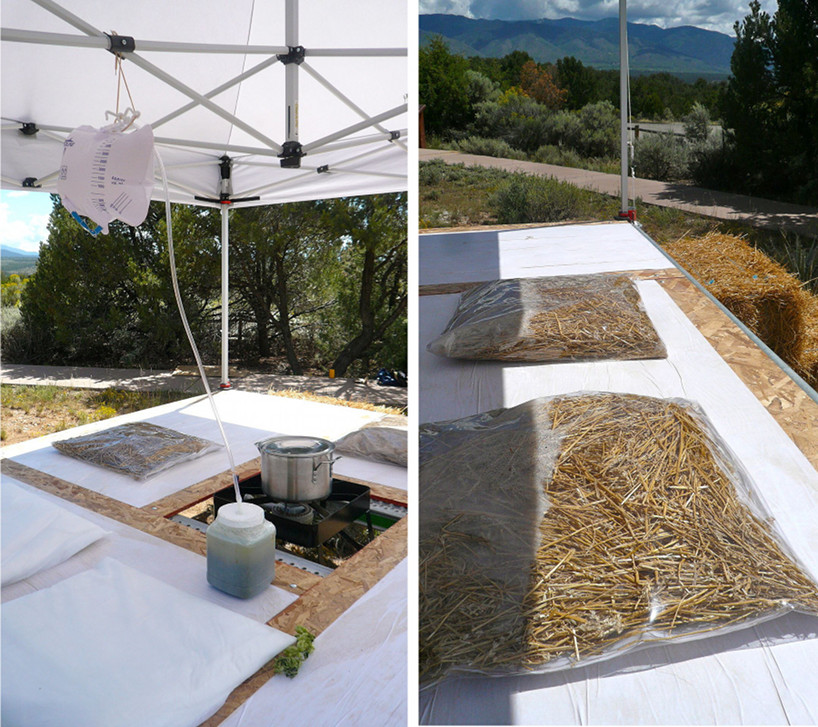
‘T’ House prototype biogas heating and biomass seating
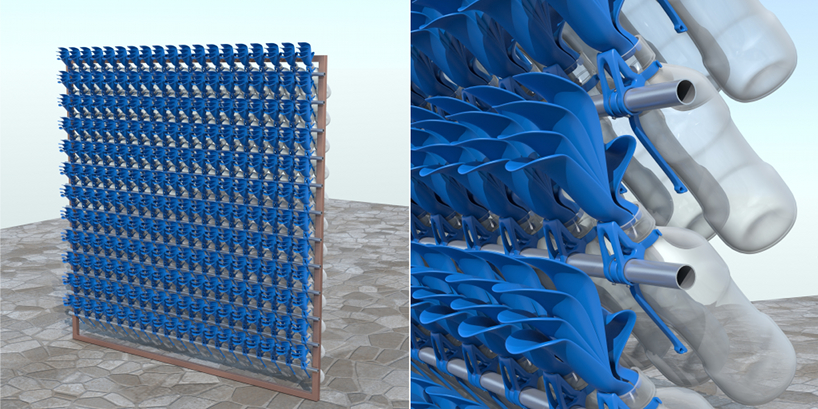
‘T’ House drawing by Eric Geusz of prototype water cachement and insulation
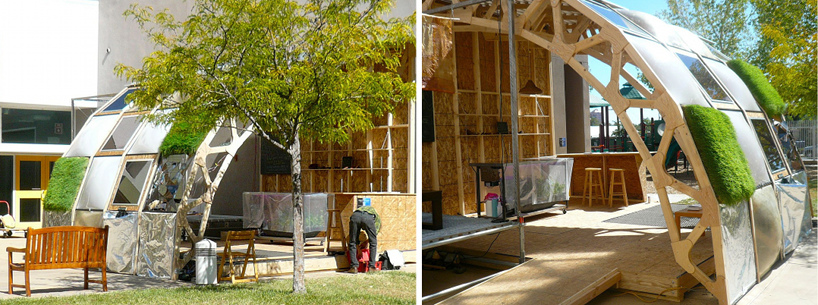
Biokitchen with modular panel system and living panels by Russell Bauer
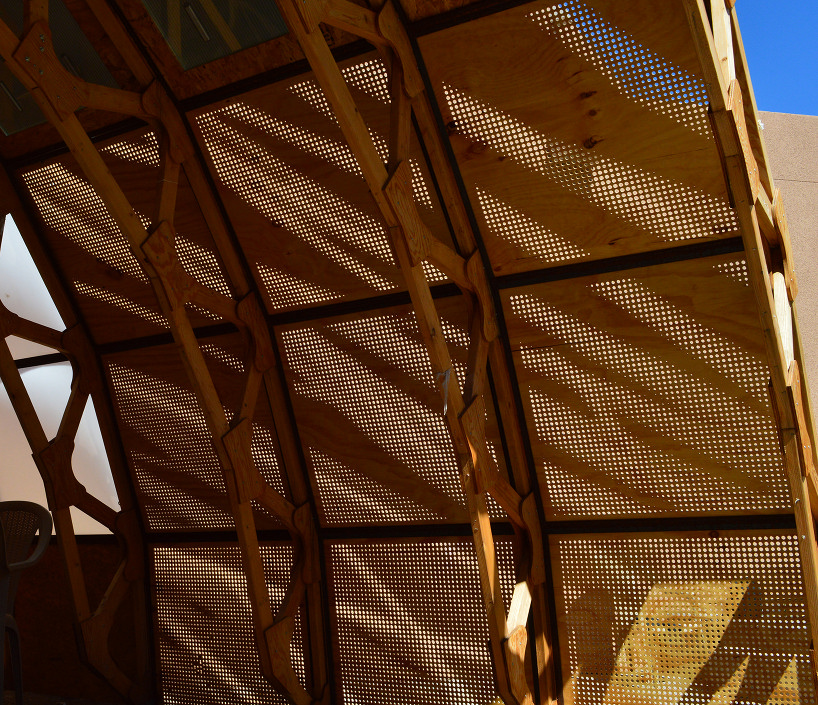
Biolitchen with digitally produced shade panels
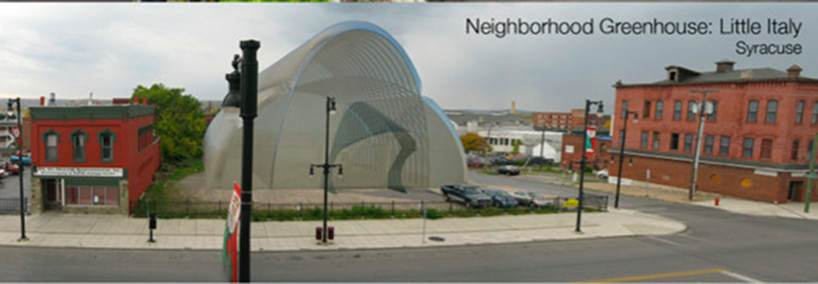
Greenhouse design by collaborator John Donalds